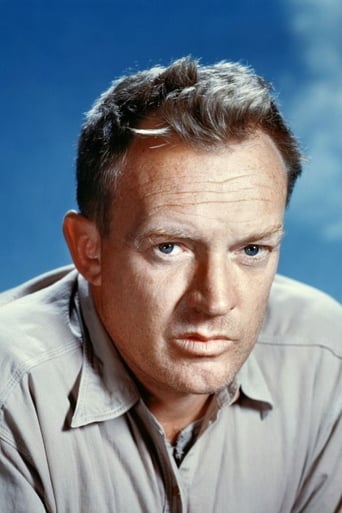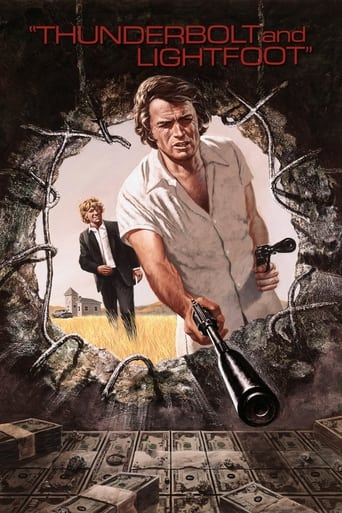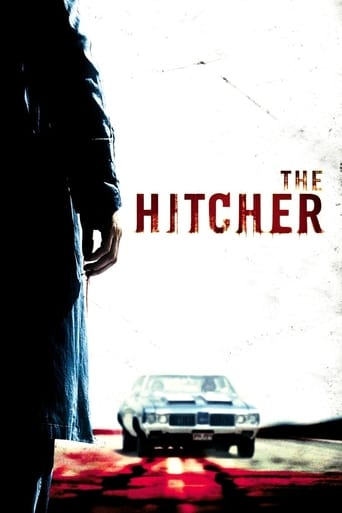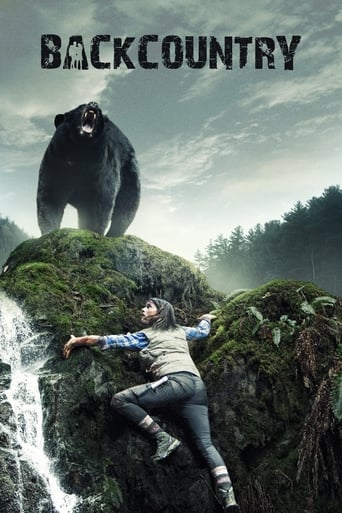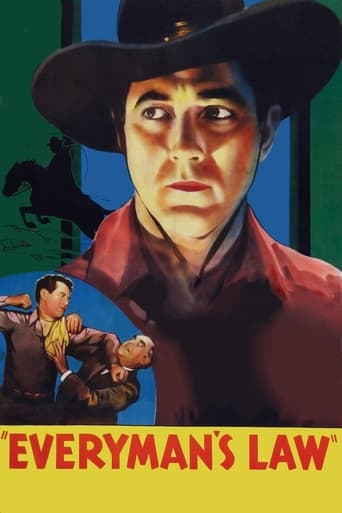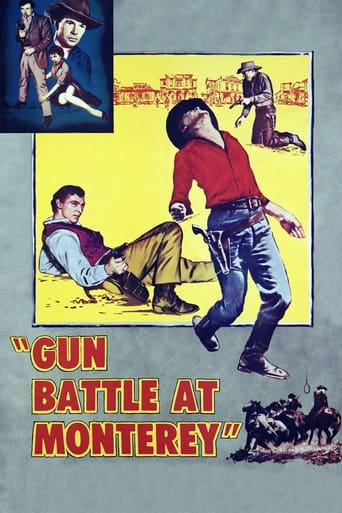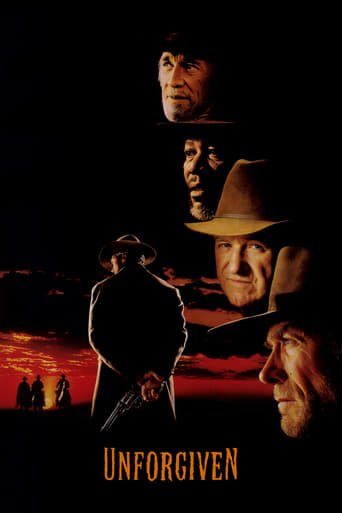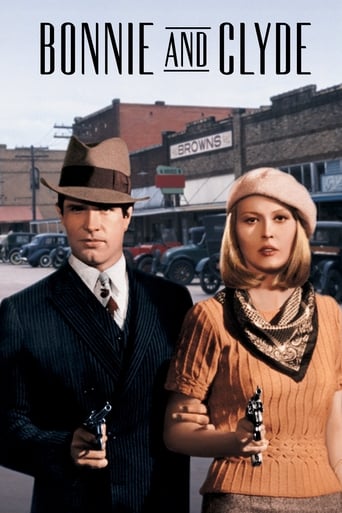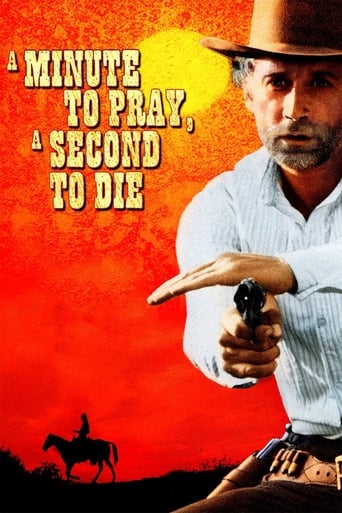
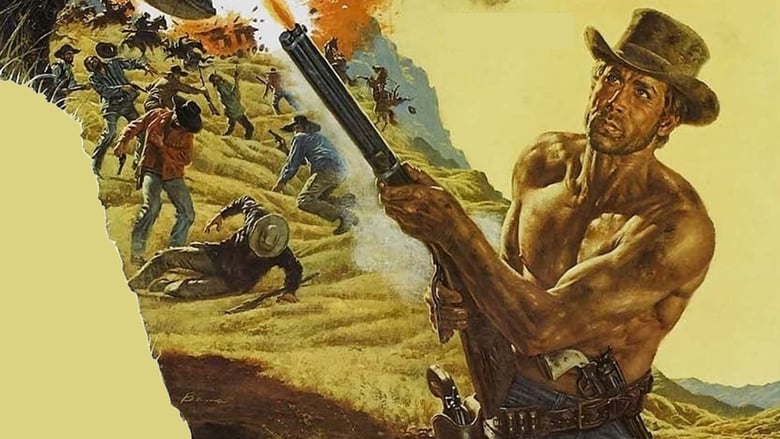
A Minute to Pray, a Second to Die (1968)
A famous gunman decides to change his life around and turn himself in when amnesty is declared by the new governor of the New Mexico Territory, but a vindictive sheriff sets out to stop him from reaching the Territory.
Watch Trailer
Cast


Similar titles
Reviews
Too much of everything
Best movie ever!
Pretty good movie overall. First half was nothing special but it got better as it went along.
Exactly the movie you think it is, but not the movie you want it to be.
In most Westerns, the protagonist is mentally healthy. He may have a single-minded obsession about something, like John Wayne's character in "Red River" and in "The Searchers," but that is just part of his manliness. There are a few Westerns, however, in which the protagonist is mentally ill. There is Sterling Hayden's character in "Johnny Guitar," who is gun crazy, and there is Charles Bronson's character in "Once Upon a Time in the West," who does not simply want revenge against the man who killed is brother, but is an obsessive-compulsive, who keeps playing the harmonica that was in his mouth when his brother died, and he even wears clothing similar to what he wore on that day. In such movies, the music is usually in a minor key."A Minute to Pray, a Second to Die" is in that subgenre. The protagonist, Clay McCord has, or at least thinks he has, epilepsy, and is haunted by memories of his father having fits. When his gun hand starts acting up in moments of temporary spasms and paralysis, he thinks it is just a matter of time before he will meet with the same fate. Even though he needs his partner to help him out when his hand freezes up, he parts with him because he cannot stand the idea of someone else seeing him in that way.He realizes that his days as a gunslinger and bandit are coming to an end, and so he decides to apply for amnesty, which is being offered in the territory of New Mexico. It turns out that he does not have epilepsy, but rather has been bothered by a bullet lodged near his spine, which is removed. Nevertheless, he applies for the amnesty anyway. But it is hardly a happy ending, because he still seems to be troubled by his past.The movie is marred by a couple of absurdities. After being rescued from Escondido by a government agent, he rides with him in his wagon until a couple of riders approach. McCord kills both of them, and then tells the agent to unhitch one of his horses, because he needs a horse to go his own way. But the two men he just killed were riding horses, which are now saddled and ready for use, and all McCord has to do is get on one of them. As one of the horses is unhitched, however, we see the two dead men in the background, but not their horses, for some strange reason.Second, McCord decides to hide out in a place called Beaver Head, which is a nice cabin, completely unoccupied and stocked with rifles and dynamite just sitting there for the taking. No explanation is given for the existence of this place, or why, with all the bandits around, it remains unmolested.All in all, this is the best Spaghetti Western not directed by Sergio Leone.
In A Minute To Pray, A Second To Die, Clay McCord (Alex Cord) is an unhappy outlaw with a ten thousand dollar bounty on his head and degenerative epilepsy.Realizing his days as an outlaw are numbered, he wants desperately (though somewhat reluctantly) to take advantage of an amnesty being granted by rough and tumble territorial governor Robert Ryan, (excellent performance) who badly wants McCord to renounce his ways and accept the amnesty as an example to others while in the bandit hub of Escondito, outlaw Mario Brega plans to kill McCord to stop that from happening.Also starring Arthur Kennedy, Aldo Sambrell and a slew of other familiar European faces, this is co-written and produced by (American) spaghetti western pioneer Albert Band, also responsible for the pre-Leone film Gunfight At Red Sands.Though the solution to the main character's "epilepsy" is lifted straight out of Howard Hawks' El Dorado, the script is solid, pretty fresh and unpretentious. This has a great balance of action and story and Alex Cord is great in it. He really should have been a bigger star.In defense of the shorter (well dubbed) English version: personally I'm past that age where the longer version is always the better version and the ending where McCord is ironically gunned down by grimy bounty hunters after his pardon, is needlessly nihilistic and completely destroys the film's message about hope and redemption.Call me old-fashioned, but I rooted for McCord and felt he earned that happy ending!
I found this to be an underrated, quietly compelling Spaghetti Western (also known as DEAD OR ALIVE). Despite modest credentials (apart from multi-purpose co-writer/producer Albert Band, the only notable crew member is composer Carlo Rustichelli), the film clearly benefits from the presence of its three American stars (newcomer Alex Cord is an ambiguous anti-hero, while veterans Arthur Kennedy and Robert Ryan lend a mythic quality to the proceedings) as well as the unusual plot (involving a crippled protagonist, an amnesty ruse covering a strategic clean-up of the town, and which has the law finally siding with the gunfighter against a horde of Mexican bandits).There are several tough action scenes on hand the film is capped by a terrific climax in which the star trio is besieged inside a blazing cabin plus a couple of outrageous moments which are something of a Spaghetti Western trademark: from the middle of the street, Cord sees a hidden gunman at a window reflected in a whiskey bottle; a man who helps Cord escape is repeatedly immersed in a pool of oil by the villains. Nicoletta Machiavelli also makes a nice impression as a village girl with whom Cord lodges; the supporting cast, then, is peppered with familiar (if largely anonymous) faces all of them essentially genre fixtures.I wasn't aware of the fact that the English-dubbed version of the film on MGM/UA's R1 DVD was cut: I was fooled by the wrong running-time being listed on the back-cover; the film was only 99 minutes long and not 118 apparently, Cord's character is killed in the longer Italian version!
The cast alone tells you this will be a notch above the usual Italian western. Veteran actors Robert Ryan and Arthur Kennedy team up with Alex Cord who, at the time, seemed on the verge of stardom. The result is a movie that's both off-beat and down-beat and yet it'll satisfy those who seek more from a western than just gunplay. Especially interesting here is the character played by Alex Cord. One expects the "hero" in these westerns to be taciturn and introspective, but "Clay McCord" is an extreme example and, surprisingly enough, he's often shone in a passive, even weak position. Much is made of the fact that he fears falling prey to the epileptic fits which immobilized his father, and in these moments of helplessness he's either at the mercy of those who wish to harm him or those who wish to help him. To emphasize his passivity, Clay McCord -- don't you love that name? -- is often shone stripped to the waist as if he were little more than an attractive plaything being put on display. There's even a strong masochistic streak in his nature, most in evidence when he's used as a punching bag by his enemies and then suspended by his wrists and left hanging above the middle of a street. Not only does he often fail to protect himself, but McCord is equally ineffective in protecting those around him. Nearly everyone who helps him is killed. While "A Minute to Pray, a Second to Die" is far from being a complete success, it has a depth and a tone which sets it apart and causes it to linger in the memory. It's also a good showcase for Alex Cord whose career tended to decline after this point following a few promising years in the mid-1960s. He must have been about 34 years old when he filmed this -- in his physical prime -- and the scene of him hanging by his wrists, bare-chested and sweaty, is a memorable piece of cinematic "beefcake."



